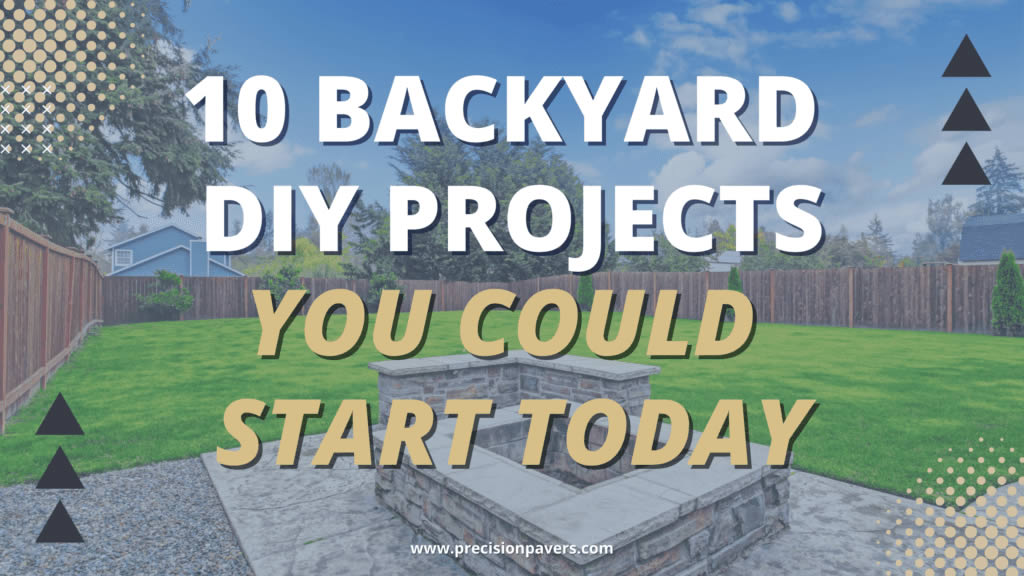Recent Posts:

9/12/2022
Are you tired of spending big money every year on swimming pool memberships? Is an in-ground pool out of your budget? If you answered ‘yes' to both questions you should consider finding the best above-ground pool.
The first-ever above-ground swimming pool dates back over a century ago to 1907. The Roebling Construction Company built it for the Philadelphia Racquet Club. Cruise ships that featured portable pools included the White Star Lines' Adriatic and its sister ship the Titanic, which famously sank in April 1912.
Swimming pools became mainstream in the United States after World War II. They were featured in Hollywood films and became a status symbol of the post-WW2 economic boom.
Today backyard swimming pools have become very commonplace. In the US alone over 10.4 million residential swimming pools exist. Meanwhile, New Zealand has the highest per capita figure at 200,000 pools.
How to Choose the Right Above-Ground Pool?
Intex above-ground pool
1. Take your budget into account
When purchasing other products for your home/yard it's critical to set a budget to find the best above-ground pool. Review your monthly budget and figure out the amount of money you can realistically afford to spend on a brand-new swimming pool.
Should go over budget? If you find the perfect model and it's a little more than you've budgeted then it probably won't be a big deal. Spending two, three, or 10x your budget is another story. Sticking to your budget as much as possible is just as important as setting one.
How much should you expect to pay?
Keep in mind that the possible costs include factors like a professional installation. It really depends on a wide range of factors so it's important to take them into account.
2. Size
Size is the biggest factor that affects the cost. Larger pools have more volume and thus require more electricity, upkeep, etc.
What factors should you think about? Make sure to consider the pool's functions. If you're just using it for your small family to cool off during hot summer days then a small pool would be enough.
On the other hand, if you'll be using it for lap swimming and games like volleyball/basketball/polo you should certainly consider a larger size.
3. Shape
This is somewhat related to the pool's size so it's worth considering when shopping for a swimming pool that's within the budget you've set. Installation for round pools is easier. This is also a good option for small families, couples, and singles.
Meanwhile, oval pools are more efficient in terms of your yard's free space. They also are practical if you want to do activities like lap swimming vs. just cooling off on the hottest day of the year.
4. Installation
If you plan on having the pool professionally installed you should tack on $1,000-$3,000. That includes various labor costs for leveling the ground, dumping/spreading sand, and installing electricity.
5. Tree / Bush Removal
It's important to provide enough clearance so your swimming pool isn't affected by nearby trees/bushes. Things like falling leaves can make it tougher to maintain the pool.
In fact, such vegetation can be a mixed bag. They can add aesthetic value to the pool while increasing maintenance. So it's a matter of weighing the pros like extra shade, with cons like removing lots of colorful leaves in the fall.
6. Permits
Depending on local laws you might be required to secure a permit before installing swimming pools that are on the ground.
7. Insurance
Your rates might increase when installing a pool so make sure to contact your insurance company about the issue. Even if you take every safety precaution possible remember the old saying that “stuff” happens in life.
One major issue to take up in terms of the costs of above-ground pools is they're much cheaper than in-ground pools. Yes, the latter can help to boost the value of your property. However, the total costs including installation are much higher.
So you could consider some key issues. They include how much you're willing to invest and how long you expect to use the pool.
8. Choose a location
The old saying “location, location, location” certainly applies when picking a location for the best above-ground pool. It starts with surveying your front or back yard.
Besides having enough space to install the pool you should also make sure the terrain is level. What if the area is uneven? In that case, you could level it out yourself or hire a professional to do it. Just make sure to consider the extra time, effort, and cost that would be involved.
You should also factor in how close the pool would be to your house. This is due to a few key issues. You'll need to supply water and electricity to the pool so you should consider how easy it is to run hoses and wires to the pool.
Another issue related to the pool's location is any zoning restrictions that might apply. For example, if the would-be pool is too close to your property line this could go against local zoning laws. That could require you to pay a big fine or take down the pool unit. Both results would end your pool party before it starts.
9. Measure the Area
A big issue is picking a pool that your yard can accommodate. Make sure there's enough elbow room so your family/friends won't feel cramped when they take a dip in the pool on a hot day.
Avoid just trying to “eyeball” whether your yard is large enough for a pool with particular dimensions. Use a tape measure and tool to mark out the space in the yard where the pool would be installed. This will tell you exactly whether or not a particular unit can fit in your yard.
After you've measured out the space outline the walls of the future pool with a hose/rope. You'll then have a visual to help you pick a particular above-ground pool for your home.
This step is highly recommended for various reasons. Many owners of above-ground swimming pools share they wish they had purchased a larger unit than they did. You'll certainly want to avoid buyer's remorse when picking any item and especially big-box products like swimming pools.
Make sure the pool will also literally provide some extra wiggle room. Each side should have 3+ feet of clearance. This will help to include the supportive uprights. When factoring in the total space required for the pool factor in other items like the pumping system and pool ladder.
There are other items you might want to add to your above-ground pool that also takes up extra space. They include fencing and decking. There's also a heating system like a heat pump, gas, or solar.
These are all add-ons that can add tons of value to your pool. Decking can provide an area around the pool for sitting/relaxing, while fencing can offer more privacy in housing areas like townhouses and duplexes.
There are also other amenities like wood/stone patios and storage units for your pool equipment/accessories. There are also landscaping installations you might want to add later so make sure to factor in enough space for them.
Do you “need” all these bells and whistles for your swimming pool? You might not add all of them but it's better to leave room for add-ons you might want to add later.
It can be tough but try to plan for any tweaks/expansions you might add in the future. You should still try to think about any possible changes you might want to make in the future. That can help to guarantee your yard has enough space for the pool plus any ancillary items like add-on decks or fences.
10. Choose the Pool Shape and Height
Shape
Here's one of the biggest issues to take up when picking the best above-ground pool. In terms of shape, the most common type of swimming pool is round. The largest round pool usually has a diameter of 33 feet. Meanwhile, oval pools usually are a maximum of 18 feet x 40 feet.
As with many other options, there are pros and cons to both round and oval/rectangular-shaped pools. The big plus of round pools is cost. For example, a round pool that's able to hold the same volume of water as an oval pool will have a price tag that's 25% to 50% the price. It's not really headlined news to save $1,000 by picking an oval pool.
Besides the cost of the unit itself the installation costs of setting up round pools can be around half the cost of a similar oval-shaped pool. So when combining the two factors this can result in big savings.
An X-factor to consider is a round swimming pool is easier to install. So if there are any issues during the process they'll generally be easier for the installer to fix than with oval pools. If the needed repairs are big ones this could cause your total costs to spike.
So what causes the difference in price? It might seem logical to guess that the quality of oval pools is generally better than oval pools. That's not really the case.
What's the difference? It has more to do with the perception that oval pools are made with sturdier materials, have a better design, or are longer-lasting. Survey says X! In fact, it's just about the buttress structure of oval swimming pools.
As we learned in elementary school a circle has no sides. Meanwhile, an oval pool has straight sides that require a structure so the wall doesn't get pushed out after filling the pool with water.
This system is known as a buttress system and it must be well-built and heavy-duty. The extra parts are pricey and must be lined up, which causes the overall cost of the pool to be significantly higher.
So does this mean the oval pool will last longer? No, it has the same basic design including the wall, frame, and caps. The only difference is the buttress system, which is different but not better.
You could experience even bigger savings if you made the pool a Do It Yourself (DIY) project. The main problem with this approach requires some know-how and experience to get the best results. Without experience in building/installing swimming pools it's highly advisable to hire the service of a professional.
Height
The heights of above-ground pools are typically 48, 52, or 54 inches. This is the measurement from the ground up to the top of the pool wall.
Which one should you pick? Deep above-ground pools are usually more popular since it provides a larger volume of water for swimming. On the other hand, pools with short wall heights have lower price tags. It's also a good option if you have young children so it's another factor to take up.
11. Decide the Type
Types of Pools
Here's one of the options when picking the best above-ground pool. As with other issues, there's some debate about whether this is the best option. A steel-wall pool is projected to last 30 years.
Here's the problem. After that time you'll have to replace the pool due to rusted metal. There are also other issues you'll have to deal including dirt buildup behind the steel, bowing-in walls, and loose coping.
There are various other issues you'll likely have to deal with. For example, if the water level is too low the steel will expand when the ground starts freezing. This could ultimately result in the pool collapsing or getting bent up.
The main plus of the steel walls is it's delivered as a kit so it just has to be assembled when it arrives at your home.
There's one big benefit aluminum provides over steel: no rust. This involves the oxidation of iron. It won't be a problem with aluminum since it contains no iron to rust.
That said, aluminum can still corrode. So the fact that it won't rust isn't as big of a plus as it might seem at first.
When picking an “aluminum” pool you can also pick between all aluminum and aluminum/resin units. The second type is less common and includes resin top rails. One drawback of this type of pool is the price is relatively high considering the walls are still made of aluminum.
There are also extruded aluminum pools. It includes interlocking sections that must be pieced together. The aluminum is sturdier, thicker, and more non-corrosive than regular aluminum.
Besides aluminum or steel hybrids you can also pick an all-resin pool. There's an issue with the term since resin itself is plastic. So technically speaking it still requires some steel components like screws and connector plates.
A more common option is hybrids that are part steel or aluminum. In fact, aluminum/resin hybrids are the most common models on the market today. They usually have steel walls with the other parts having different combinations of steel/resin.
The most common type includes mostly steel, along with resin rails/caps. The main drawback of this option is the value you get for the price isn't outstanding since the walls are aluminum.
As with the other types of above-ground pools, an inflatable pool has various pros and cons. On the plus side, these units are very portable so they're easy to take with you when you're on vacation at a beach house, for example. Another major benefit is the costs are generally much lower than other models on the market.
On the downside, these pools are often simply “toys” that are designed for one child. Another drawback is since they're made of cheaper materials you should be ready to replace the unit sooner than other materials like aluminum or steel.





© 2024 Precision Pavers (972) 423-9266